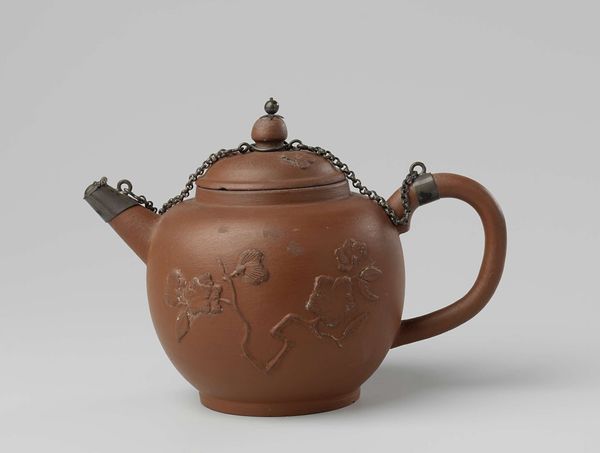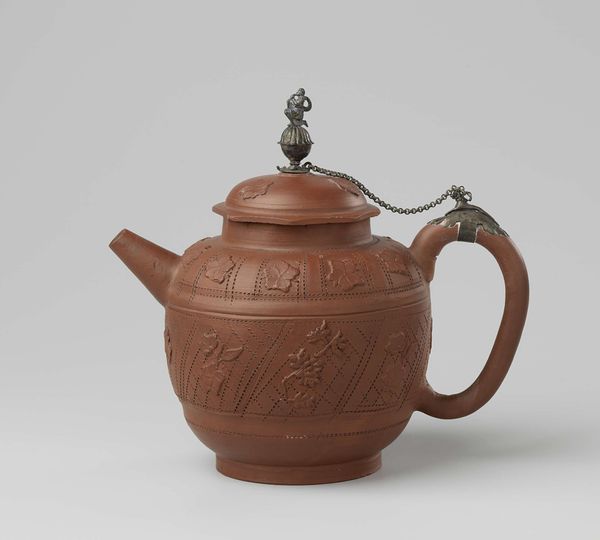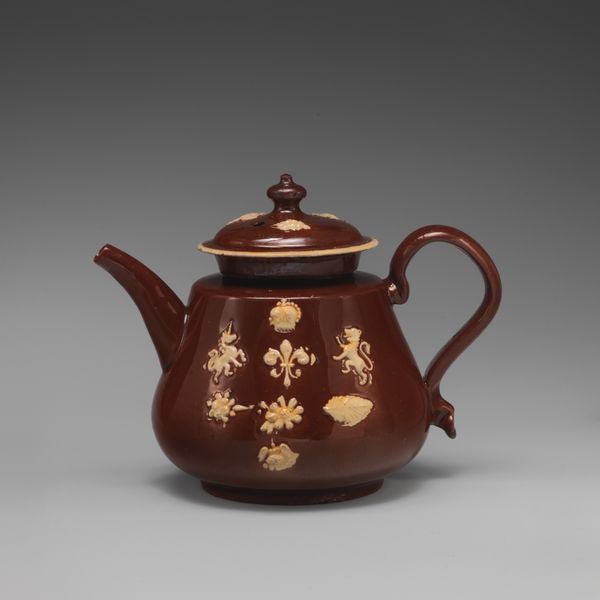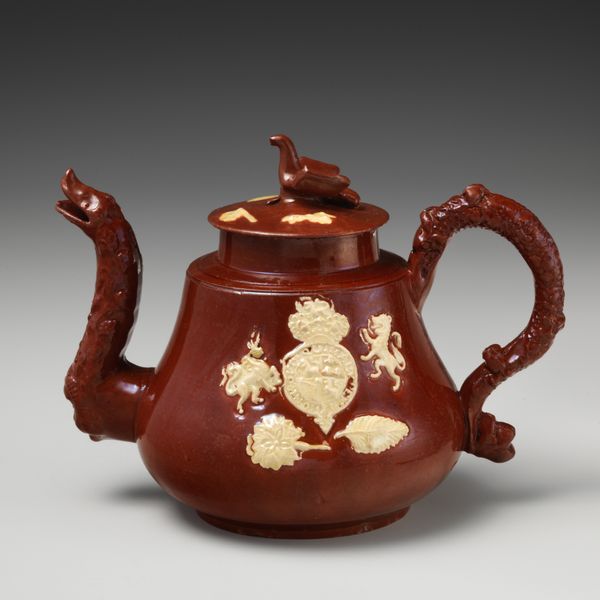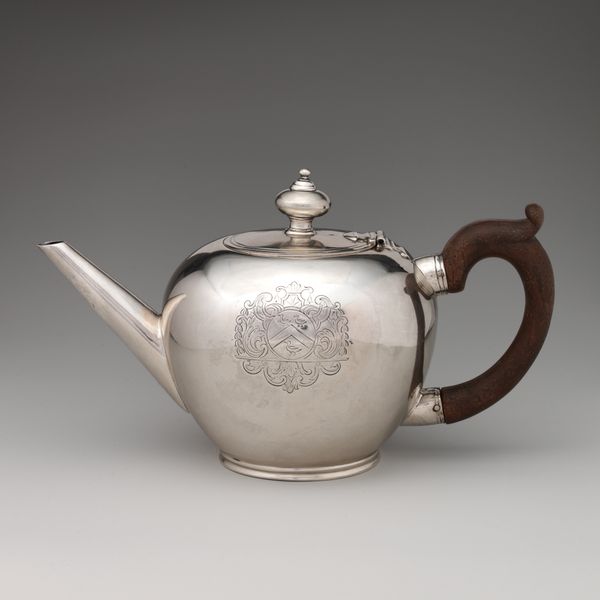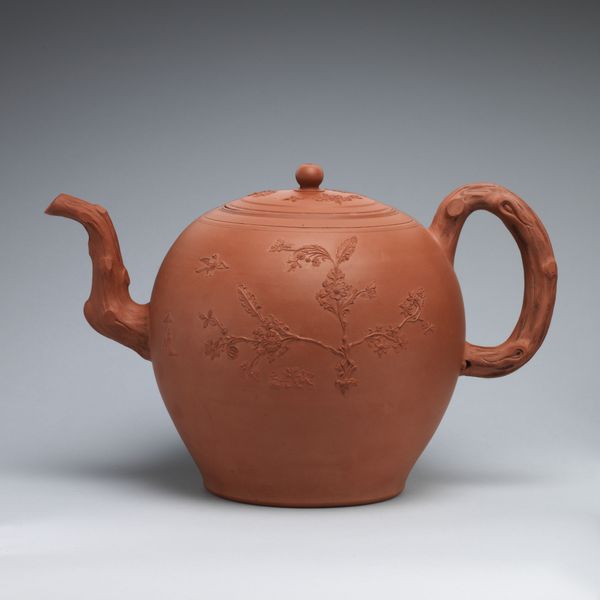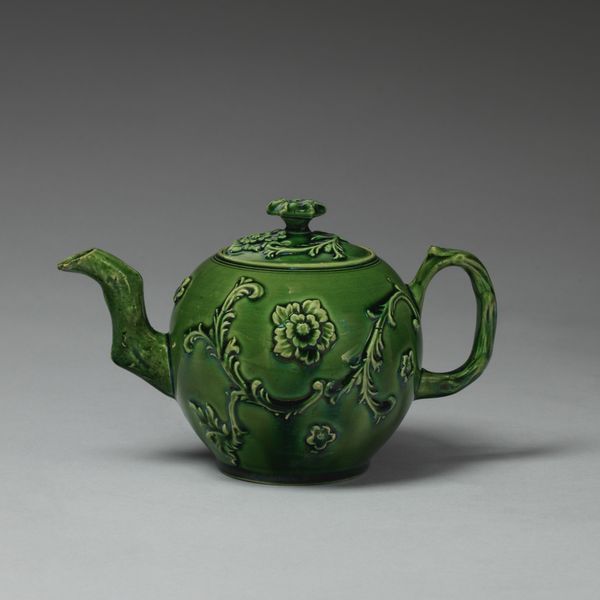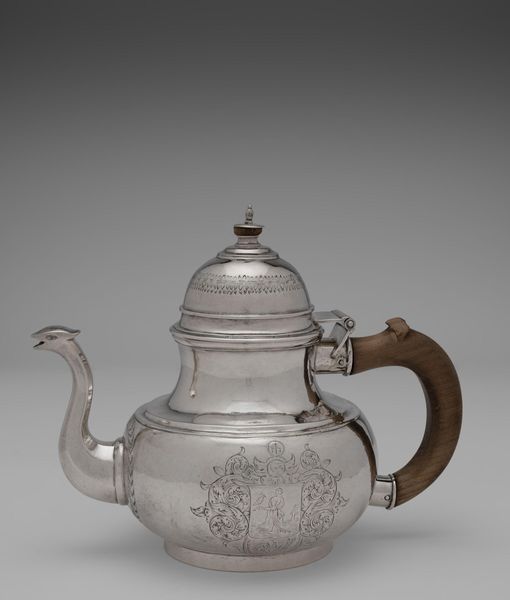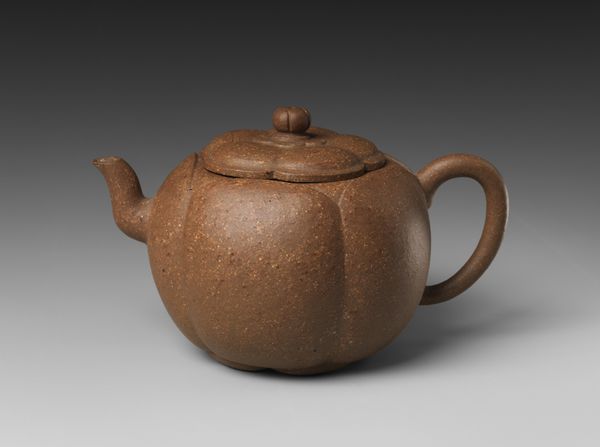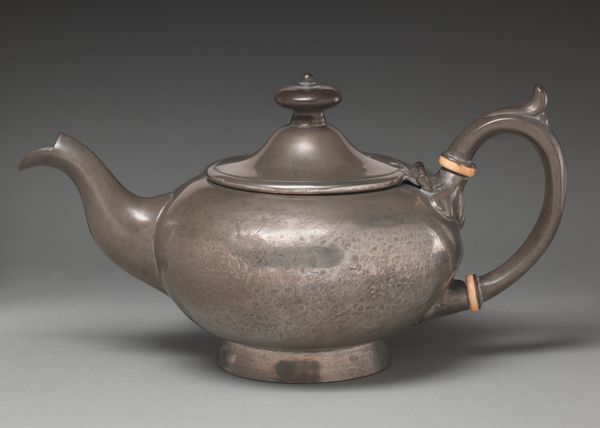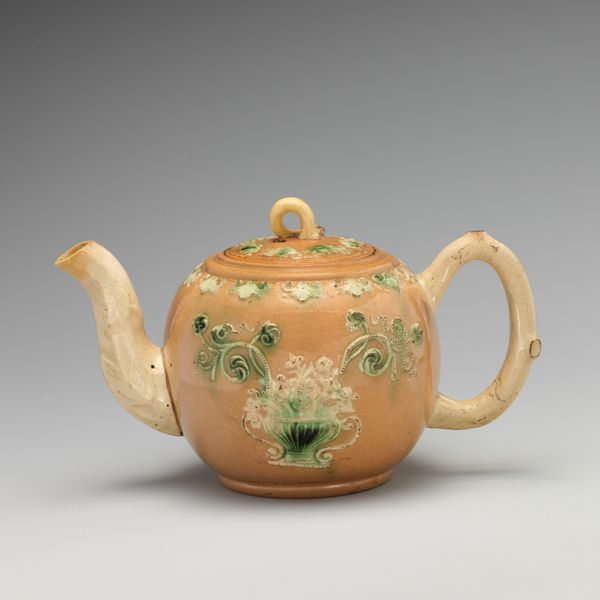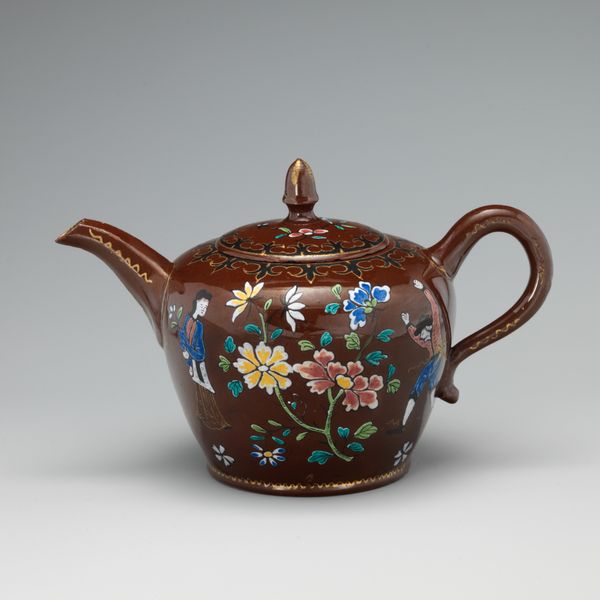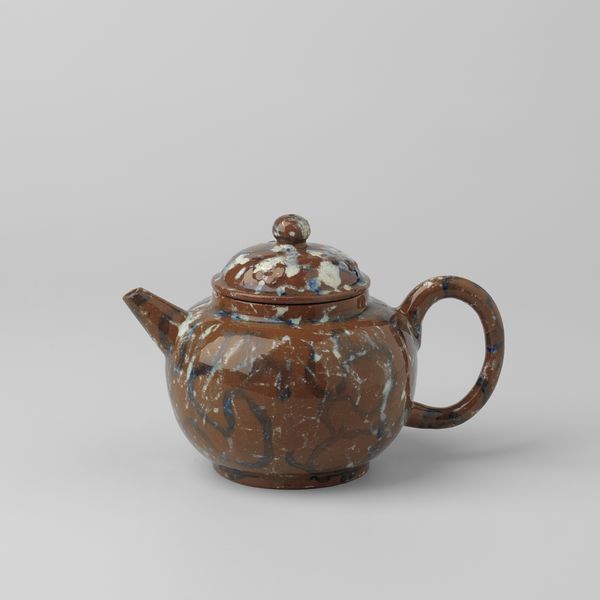
ceramic, sculpture
#
asian-art
#
ceramic
#
sculpture
#
decorative-art
Dimensions: Overall (confirmed): 4 3/4 × 7 5/16 × 4 7/8 in. (12.1 × 18.6 × 12.4 cm)
Copyright: Public Domain
Curator: This is a Yixing teapot dating from 1671 to 1708. It is currently housed at the Metropolitan Museum of Art. Editor: It's incredibly tactile! The form seems so inviting, begging to be held and poured from. The silver detailing feels both delicate and precious against the earthen clay. Curator: Absolutely. The raw material here, Yixing clay, is what defines these teapots. Sourced from Jiangsu province, this clay is so unique due to its high iron content and ability to breathe. Imagine the potter carefully crafting this piece, controlling the moisture, temperature, and firing. Each manipulation impacts the vessel's color, texture, and porosity. Editor: Right. It prompts the question of who used this? Was it a scholar in a private garden, or was it destined for export, impacting tea culture globally? And what sociopolitical currents affected its making? Curator: Exactly! Yixing teapots were highly desirable items traded along the Silk Road and within European aristocratic circles during that time. The integration of silver embellishments speaks to that, as these kinds of details signal the status of the patrons as much as the artisans' talent. Editor: And how the imagery reflects or influences courtly tastes, or the popular imagery in its time, is critical. It makes me wonder about the workshop and its methods—did it follow any established tradition and practices? What can we learn about craft guilds in relation to their own social roles? Curator: That’s insightful. Focusing on the process allows us to reflect on labor. From the mining of clay to crafting and decorating, so many steps dictate the outcome. The integration of metalwork means the work was further outsourced. And how were these skills inherited across generations? Editor: Indeed. Examining this beautiful teapot through its journey—from the earth to the museum vitrine—reveals an extraordinary interplay between form and society. Curator: Seeing the teapot now helps us perceive so much beyond aesthetics and invites new conversations around the values invested in handmade items across histories.
Comments
No comments
Be the first to comment and join the conversation on the ultimate creative platform.
